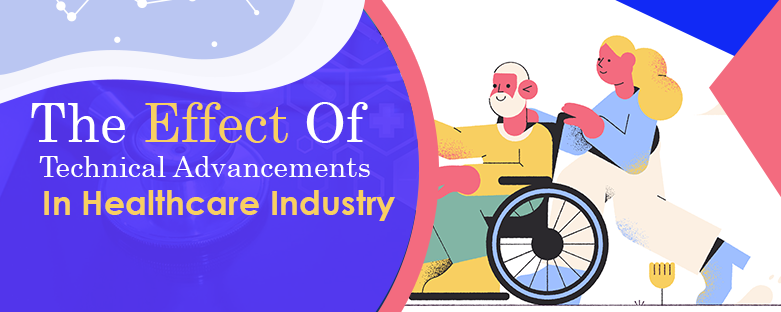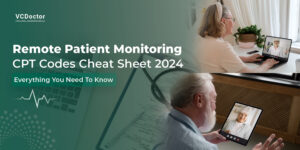The advantages of Healthcare IT Solutions in Medical industry
It could be argued that healthcare IT have improved the lives of people across the globe in all respects, none are as significant as technological advances in medicine. From the development of X-ray machines to advances in medical procedures, Technological Advancements have made us healthier and increased life expectancies. We are continuing to build innovations that cure diseases and enhance our quality of life as we step forward into the 21st century. Healthcare IT Solutions is closely integrated with technology, and graduates in Health Informatics will expand health care boundaries.
There are also substantial changes in quality that come with technological advancements that also have monetary costs and benefits attached. Modelling improvements in quality, both in terms of benefits within and outside the health system, is a difficult task, and no macroeconomic models have so far attempted to capture them.
Here are several ways in which Healthcare IT Solutions have had a big influence on the healthcare industry:
1. Better physician to physician communication
Today, many secure messaging systems allow doctors to hold an informal consultation with a colleague, use secure IM chat, and refer a patient from inside the practice management or hospital structure system. Used to be when a doctor needed to refer a patient or get clinical advice from a colleague, he called the “backline” of doctors. These developments removed the need for phone calls and phone tags and solved the issue of lost notes and phone messages; all contact is automatically monitored and logged.
Read Also: Telemedicine app features for Doctors and Patients
2. Improved Care and Efficiency Using Healthcare IT Solutions
Patient care is another main field that has developed and continues to do so. In most applications, the use of information technology has made patient care safer and more efficient.
The fact that nurses and doctors who are operating on the frontline are now regularly using hand-held computers to record critical real-time patient data and then sharing it immediately within their updated medical records is an excellent example of the benefits of health IT.
The ability to accumulate laboratory reports, records of vital signs and other important medical information in one centralized location has changed the quality of treatment and reliability that a patient can expect to obtain when they reach the healthcare system.
An improved stage of data collection efficiency means that scientists, who are discovering new ways to research patterns and make medical breakthroughs at a faster pace, have access to a large online resource of patient history.
3. Remote Monitoring Tools
They will save money and reduce unnecessary visits to the doctor’s office when patients monitor their health at home. Almost 3 million patients worldwide used home health monitoring systems at the end of 2012.
Pacemakers for heart disease patients can send data to remote health centres automatically. These tools, which are perfect for patients with chronic diseases, will allow systems to monitor the health of a patient from a distance.
Read Also: Benefits of Telehealth in Rural Areas
4. Big Data
Big data is an immense deal at the moment. Data is all about the medical and healthcare sector. There is an immense amount of data available that can provide significant insights into the state of the healthcare sector as a whole when analyzed. For instance, physicians may make more detailed diagnoses and recommend better therapies by researching patient care records.
5. Mobility and Mobile Apps with Healthcare IT Solutions
To increase accessibility for patients and healthcare professionals, mobile device apps are key. Mobile apps allow individuals to monitor their health and well-being easily; everything from reminding them to get checkups, to finding general medical records, or safely accessing their test results online 24/7 without having to book an appointment with their GP and wait days for results. On the other hand, healthcare professionals can easily access disease and drug-related records, clinical photos, continuing education activities, and so on.
6. Ease of Workflow with Healthcare IT Solutions
Some of the most affected allied health employees are medical billers and coders, and demand for this sector is anticipated to increase by 13 percent from 2016 to 2026, according to the Bureau of Labor Statistics. For medical billers and coders, the advent of EHRs has only made life simpler.
It is much less time consuming than paper-based approaches to insert data into a computerized system, and it eliminates the possibility of mistakes in inpatient data and financial information. Digitally accessing patient records often helps specialists in medical coding to work from home, increasing quality and productivity.
7. Telemedicine/Telehealth
Telemedicine brings the digitization of healthcare to the next logical step: virtually anywhere in the world allowing patients to communicate with specialists. This is the healthcare system technology used to resolve distance obstacles and promote medical care in emergencies, potentially saving lives.
Telemedicine has made it possible for patients to use telemedical equipment using different software and video telephony to obtain home treatment and assistance. In telemedicine, to allow asynchronous consultations (which do not require all parties to be present or online at the same time), the store-and-forward feature helps transfer ‘biosignals, medical images, and other data to a specialist. This will dramatically minimize patients’ waiting time; speeding up processes of delivery of care.
8. Cloud/Portal Technology
The emergence of cloud services has also helped the healthcare sector. Through this technology, all patients’ sensitive health-related data can be securely stored in one location. Doctors or patients can easily access this information anytime they need it. This satisfies the need for the parties involved to have immediate and omnipresent access to information. Cloud technology helps patients to exchange information smoothly and allows them to cooperate and coordinate with each other to maximize the quality of patient care.




